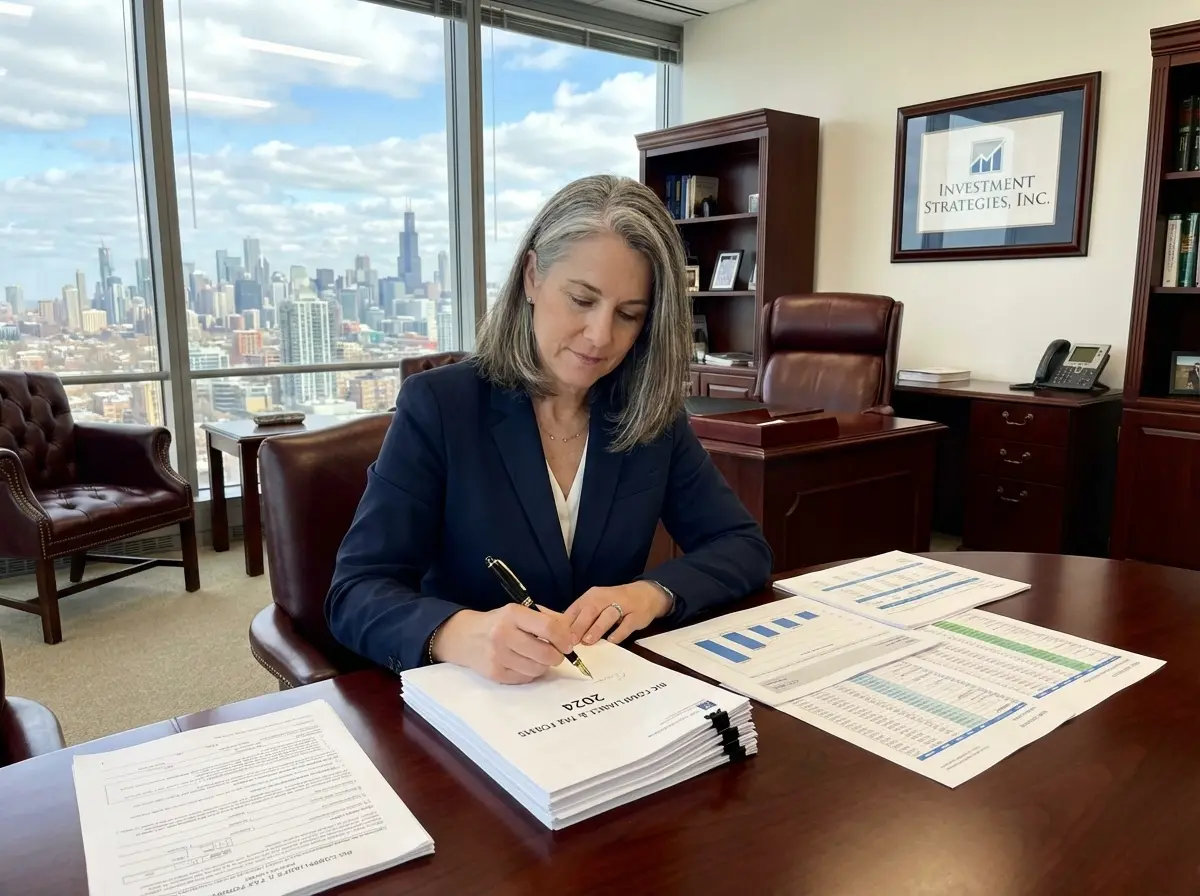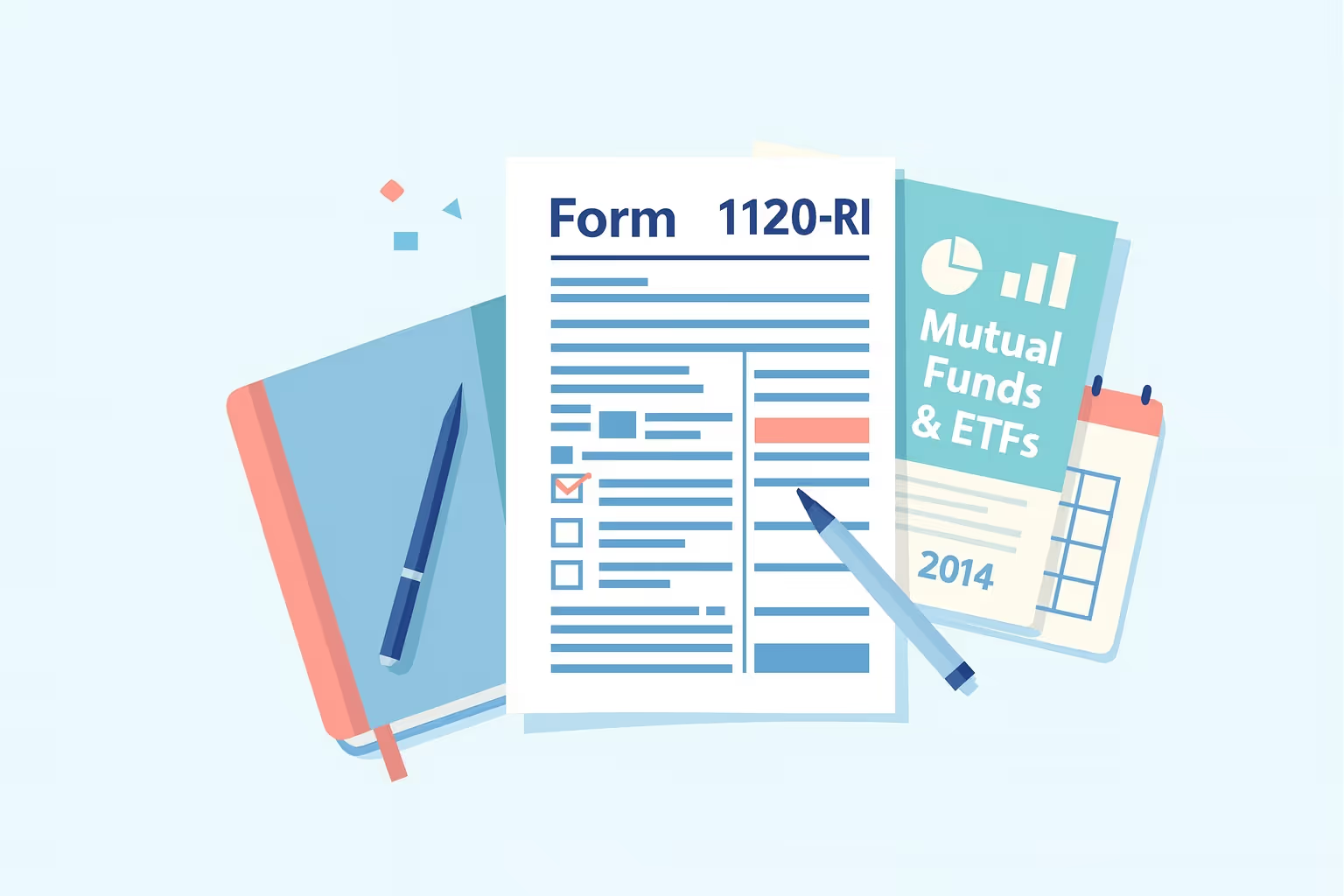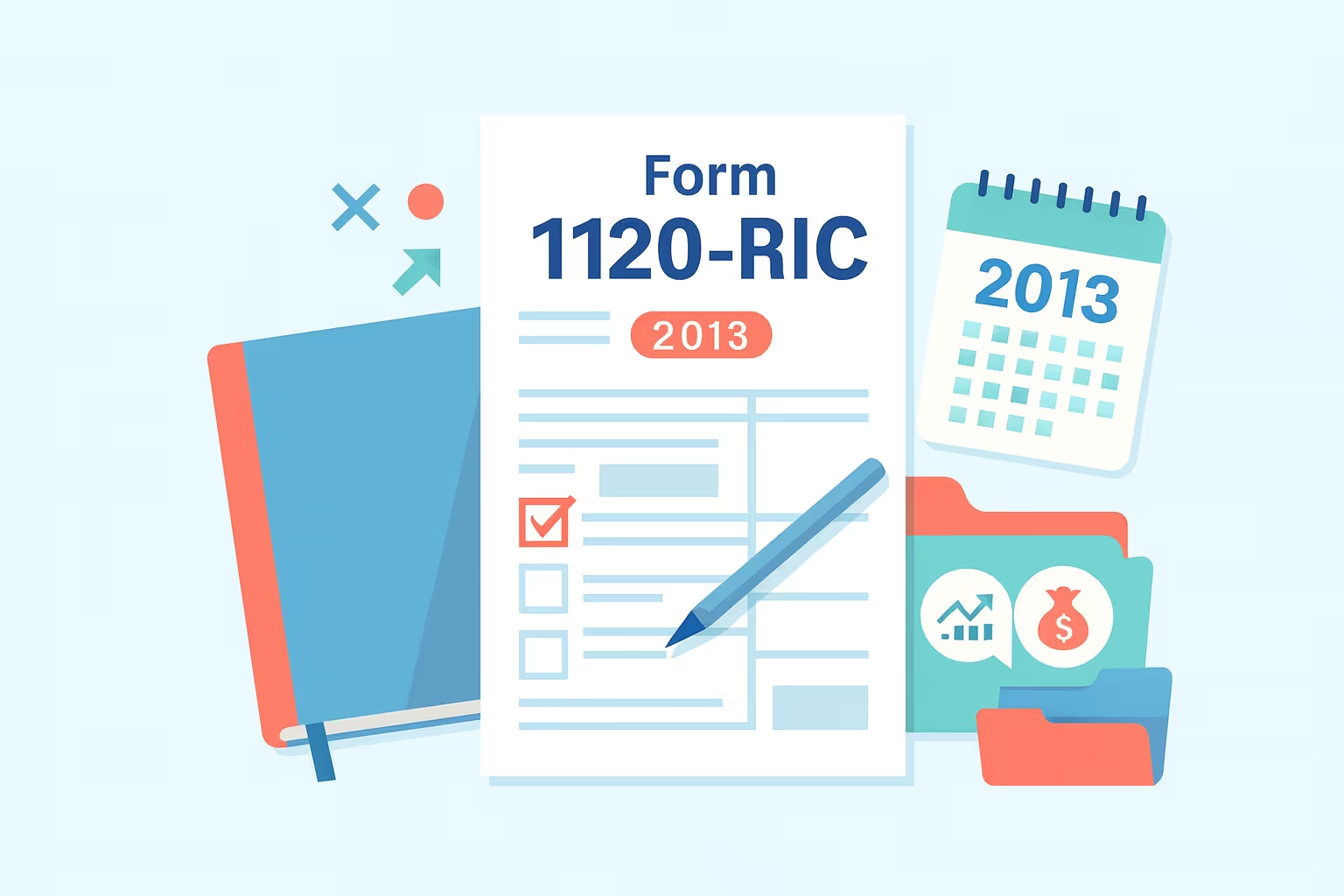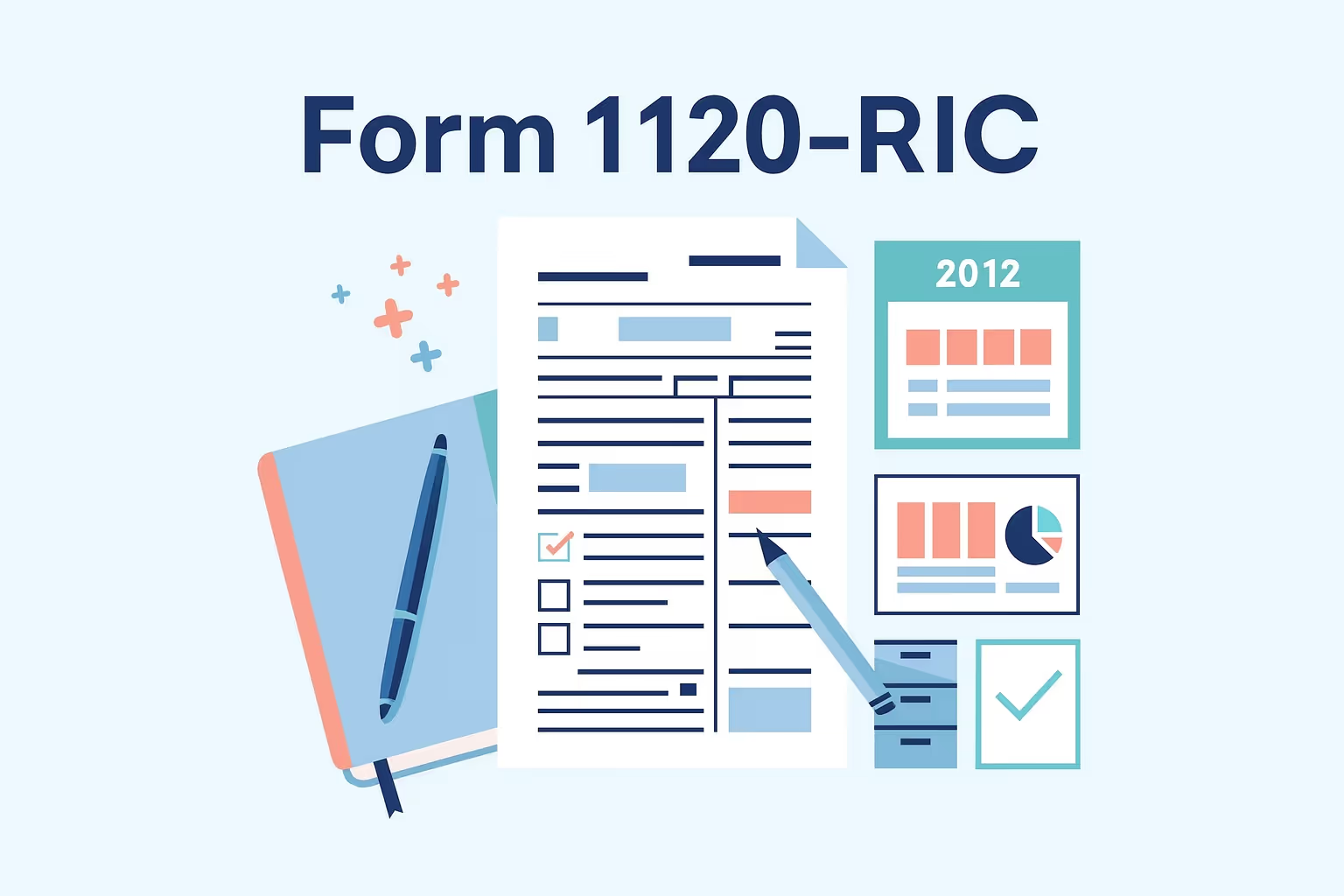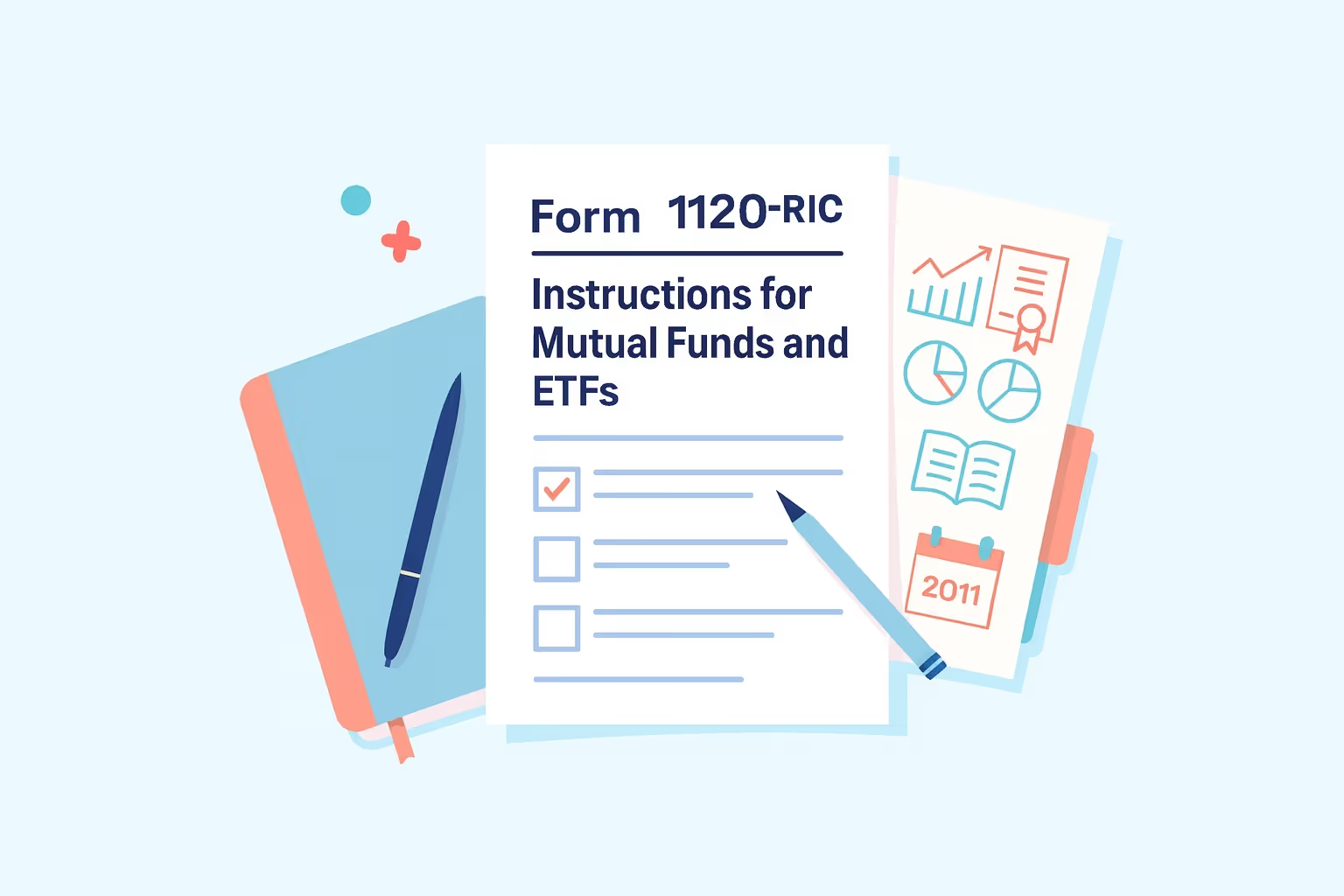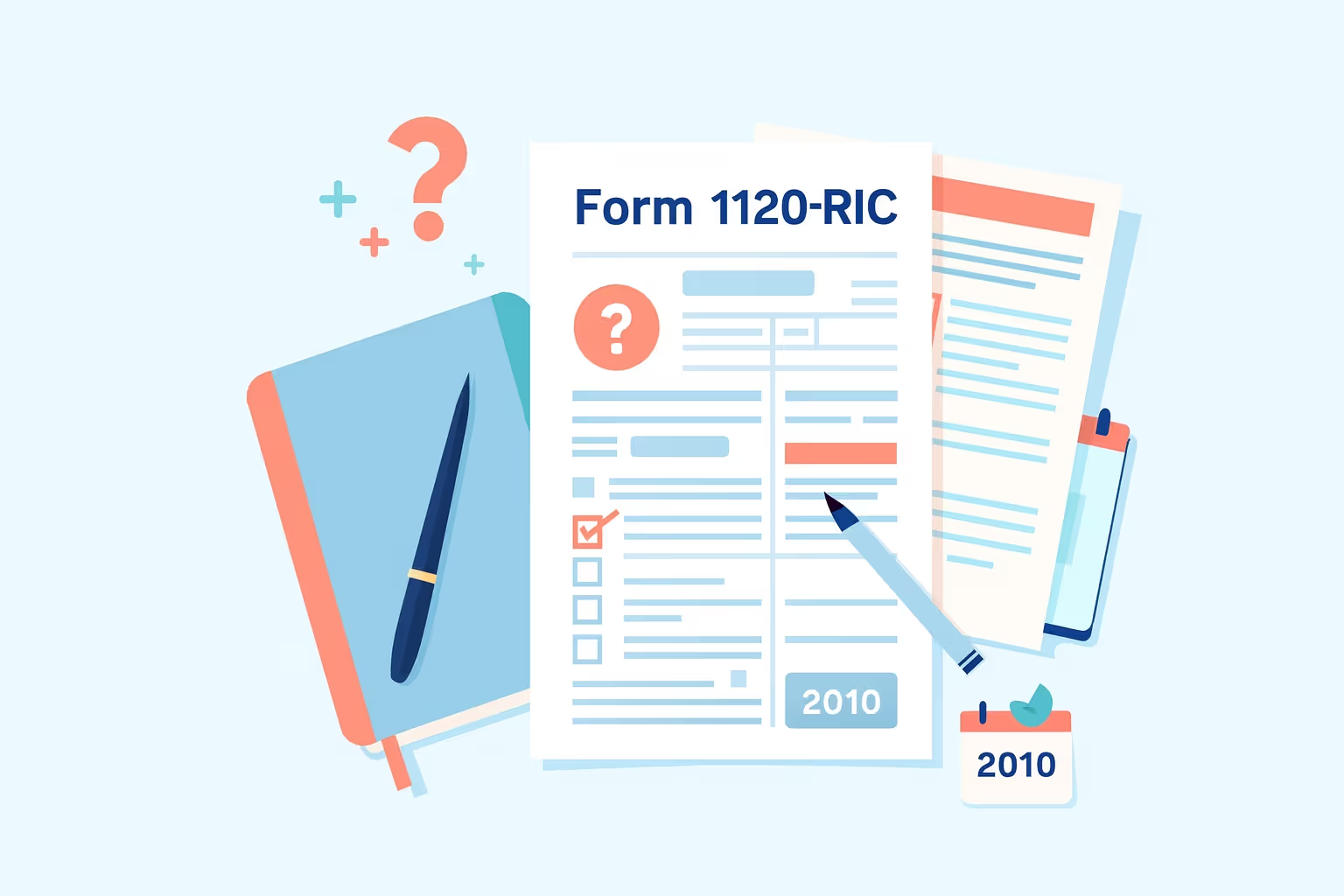
What IRS Form 1120-RIC (2019) Is For
IRS Form 1120-RIC (2019) is the U.S. Income Tax Return for Regulated Investment Companies (RICs). This federal tax form, issued by the Internal Revenue Service (IRS) in Washington, D.C., is used by corporations and mutual funds that qualify as RICs to report taxable income, deductions, capital gains, credits, and expenses. Filing Form 1120-RIC ensures proper calculation of a company’s income tax liability and compliance with federal taxation requirements under Section 851 of the Internal Revenue Code.
Corporations electing RIC status must submit this corporation's income tax return each tax year to maintain eligibility as a regulated investment company. The 2019 tax return was due April 15, 2020, though extensions and late or amended filings may still be submitted to correct prior errors, update partnership income, or claim valid refunds. Properly completing the form—using the correct RIC U.S. income tax return version and employer identification number (EIN)—ensures the IRS accurately records income, dividends, and capital gains reported for that filing period.
The form ensures that the IRS can verify a company’s compliance with the income, distribution, and diversification requirements under Section 851. Corporations must file Form 1120-RIC if they are:
- Electing RIC treatment under Section 851
- Earning at least 90 percent of income from dividends, interest, or gains on securities
- Meeting asset diversification requirements under Section 851(b)(3)
- Distributing at least 90 percent of taxable income to shareholders each year
When You’d Use IRS Form 1120-RIC (2019)
RICs must file Form 1120-RIC annually to report income and maintain compliance. However, the 2019 version may still need to be filed late or amended if the IRS issued a notice for an unfiled return or the corporation identified reporting errors. The standard due date for the 2019 tax year was April 15, 2020, or September 15 for fiscal-year RICs ending June 30.
Refund claims were allowed within three years of the original due date, through April 15, 2023. Filing after the deadline is still necessary to stop penalties and resolve outstanding compliance issues.
Key Rules or Details for 2019
The 2019 tax year introduced key updates for RICs. The minimum penalty for late filing has increased to the lesser amount between $435 and the total tax due for returns that are filed more than 60 days late. IRS Notice 2022-36 provided automatic penalty relief for certain 2019 returns filed by September 30, 2022.
RICs could also claim unlimited charitable deductions for disaster-related contributions between December 31, 2017, and February 19, 2020. The correct 2019 version of the form is essential, as submitting the wrong year’s version can result in rejection or processing delays.
Step-by-Step (High Level)
Step 1: Gather transcripts and records
To ensure all income and shareholder distributions are correctly reported before filing, request income and account transcripts from IRS.gov or by calling 800-908-9946.
Step 2: Complete the correct 2019 form
Use the official 2019 version of Form 1120-RIC. Complete all lines directly on the form rather than writing “See attached,” which may delay processing.
Step 3: Attach required schedules
Attach all supporting schedules in the order listed in the IRS instructions. Include Schedule D for capital gains and losses, Schedule N for international transactions, and Form 8613 if your company owes a 4 percent excise tax on undistributed income.
Step 4: File and pay to the Internal Revenue Service
Mail the return to the Department of the Treasury, Internal Revenue Service, Ogden, UT 84201-0012, or use an approved private delivery service. Include payment or make electronic payments through IRS-approved methods. For more information on payment options, visit this resource.
Step 5: Retain copies
Keep copies of the filed return, schedules, and supporting documentation. These records are important for verifying future filings and supporting potential audits.
Common Mistakes and How to Avoid Them
- Leaving blank fields on the form: The IRS may reject or delay processing returns that contain incomplete information. Ensure that every applicable line is filled out, even if the entry is zero.
- Submitting unsigned returns: Unsigned returns are considered invalid. Always have an authorized corporate officer sign the form before mailing it to the IRS.
- Incorrect attachment order: Attaching schedules and statements incorrectly can slow IRS processing. Follow the attachment sequence listed in the official Form 1120-RIC instructions.
- Missing Employer Identification Number (EIN): If the EIN has not yet been issued, write “Applied for” along with the date of application to avoid rejection.
- Failure to meet the 90 percent income distribution rule: Not distributing at least 90 percent of taxable income to shareholders can result in loss of RIC status and taxation as a C corporation.
- Omitting Form 8613 when excise tax applies: RICs subject to the 4 percent excise tax on undistributed income must include Form 8613. Forgetting this form can trigger penalties or additional correspondence.
- Improper signature authorization: For series funds, ensure that the officer signing the return is specifically authorized for that fund. An unauthorized signature can invalidate the filing.
What Happens After You File
The IRS typically processes Form 1120-RIC within six to eight weeks, although late or amended returns can take longer due to additional verification steps. The IRS will issue a written notice if clarification or supporting documentation is needed. Interest and penalties continue to accrue until payment is made in full.
Taxpayers who cannot pay immediately should still file the return to stop late-filing penalties and request an installment plan using Form 9465. If you disagree with an IRS determination, you have 30 days from the notice date to appeal through the IRS Office of Appeals.
FAQs
Can I still get a refund if I file my IRS Form 1120-RIC (2019) tax return late?
Yes, but only if you file within three years of the original due date. For 2019 returns, that deadline was April 15, 2023. After that date, refunds are forfeited to the U.S. Treasury.
What penalties apply for filing a late Form 1120-RIC U.S. income tax return for regulated investment companies?
The penalty is 5 percent of the unpaid tax for each month the return is late, up to a maximum of 25 percent. If the return is more than 60 days late, a minimum penalty of $435 or the tax due—whichever is smaller—applies.
Do regulated investment companies need to file Form 8613 and their Form 1120-RIC tax return?
A regulated investment company must file Form 8613 if it fails to distribute at least 98 percent of its ordinary income and 98.2 percent of capital gains by December 31, 2019.
Can I e-file my tax return or other forms with the Internal Revenue Service?
Electronic filing for prior-year forms, including Form 1120-RIC U.S. income tax returns, is generally unavailable. Most 2019 filings must be mailed directly to the Internal Revenue Service.
What should I do if my regulated investment company cannot pay the tax owed on its income tax return?
You should still file the income tax return to prevent additional penalties. Then submit Form 9465 to the Internal Revenue Service to request an installment agreement for monthly payments and continued compliance.
For more resources on filing or understanding prior-year IRS forms, visit IRS Form 1120-RIC (2019): Regulated Investment Company Tax Return Guide.







